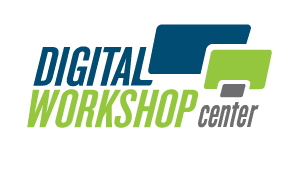UX Design: The Skill Quickly Becoming Essential
Think of when you arrive at a business for the first time and you push on the door only to find you need to pull it instead. While a seemingly small hiccup in your experience at that business, it can start to add up when you enter the business and continue to face confusion. The same thing happens online. When you search for a business or product online and only encounter hiccups and confusion, your user experience becomes irritable and you turn elsewhere for your needs.
What is UX Design & Why is it Important?
A user’s experience differs among the user. Assuming what a user might want or how they might need it can be tricky territory without diving deep into defining the multiple experiences possible that a user might have with your business and/or product. Accessibility also plays a large part in a user’s experience as well; a website that is not accessible to all users fails to have positive and well-rounded UX design. “The most important thing to keep in mind when designing a product is that though you have designed the product, you might not be a potential user who might be using the product,” as noted in a recent article by UX Planet.

The Digital UX Design Process
Taking the time to properly define personas for possible users, the problems that might arise, the strategies to solve them, and having objectives and features that provide the most effective solution is one of the best ways to go about designing with a user’s experience in mind. Those who jump straight to solutions might miss the hidden issues that defining personas, strategies, and objectives help discover.
Defining User Personas
The first step in any good UX design is defining the personas of the users that might be using the website, product, and/or services. Based on market research and data on existing consumer audiences, a user persona is a semi-fictional, “look-alike” representation of your ideal digital consumer. Some of the common traits that might be considered when defining user personas include demographics, personality, and motivations. These personas won’t happen overnight and should take some time to develop as website analysis and data is collected and the business grows and changes.
Interface Testing & Search Engine Optimization
There is a lot of competition for market share in the current digital economy where if a business doesn’t have an accessible website for consumers to search for, it becomes difficult for the business to grow beyond their current loyal & local audience. For the businesses who need to reach larger groups of users, interface testing and search engine optimization is crucial for understanding what else and who else is providing similar products and services. Interface testing enables a comparison of other websites to show the effectiveness and quality of experience between different companies and how a minor change can potentially improve one’s interface drastically over anothers. Search engine optimization (SEO) refers to the process of improving a web page’s visibility in search engines like Google. When someone searches for a product, service, or information and your business/company offers what they are looking for, you want your web page to be one of the first that pops up. Google provides an excellent starter guide in implementing SEO practices to business web development and marketing strategies.
Charting Functionality, User Flow & Wireframes
Building a functionality map for the pages of a brand’s website provides a clearly organized hierarchy of all the pages and subpages and charts the imaginary lines that a user will take to get to what they are looking for. These imaginary lines are what makes up users flow. Good UX design has seamless and efficient user flow to contribute to a positive user experience. User flow can also contribute to the evolution of user personas and help illuminate the road blocks and issues that consumers are having. Wireframes are the outlines of a webpage and are “usually a two-dimensional skeleton outlining what you’ll include in each view of your app, kind of like a blueprint,” as noted by the UX Design Institute.
Design Patterns & Style Guides
While a bit different than UX design, UI (user interface) design is important to be aware of when designing with users in mind. UI design ties closely with the accessibility and usability of an experience with a product and.or service. “UI is the look and feel of a website, its responsiveness and interactivity,” as noted by Micheal Georgiou. Design patterns provide consistency by using UI elements for certain paths a user will take to get to the information and content they seek. An example of UI elements used are style tiles “that ensure a user will have a smooth experience across the entire site so they’ll be able to better recognize how to interact with the site.” Style guides are important to build and implement across all digital pages that hold a business’s brand. Style guides “give writers and designers a framework in which to work when creating content and developing a design, and they also ensure that the brand and design elements align with the owner’s goals.”

UX Planet’s Prayag Gangadharan provides an insightful step-by-step process UX designers might go through in order to come up with the most effective and efficient solution.
The Power of UX Design for Small Businesses
In September 2023, UserGuiding, a code-free product walkthrough software that helps teams scale user onboarding and boost user engagement, conducted research into the most compelling facts about consumers, user experience, and the designs of the websites they use to find what they are looking for:
- 88% of online customers say they wouldn’t return to a website after having a bad user experience.
- 75% of customers judge a website’s credibility based on its aesthetics.
- 46% of consumers check a business’s website or online inventory first before visiting its store.
- 74% of businesses say that user experience is vital for increasing sales.
- For every $1 spent in website UX, you can expect a return of investment up to $100.
Careers in User Experience
Those who have prior experience with web development, digital marketing and design, or have worked on websites for small businesses over time in their professional endeavors have the transferable skills that could bring them success in the world of UX design. Often those who have skills in implementing accessible, usable, and informational UI elements when building websites and other web applications have the skills to land any UX design opportunity.

Learning UX Design Through Certificate Programs
Those who enroll in DWC’s UX Design certificate can learn to encompass all aspects of the end-user’s experience, becoming familiar with the advanced technical concepts and software that create the elements of positive user experience. Students who successfully complete the certificate program can expect to walk away with knowledge gained from industry experts who teach how to define a user persona and target audience, explain user floss and customer journeys, understand the role of accessibility and usability for all users, understand the use of UI tools and Adobe software to create designs, design both paper and digital prototypes, and build style guides for companies and others to use.
